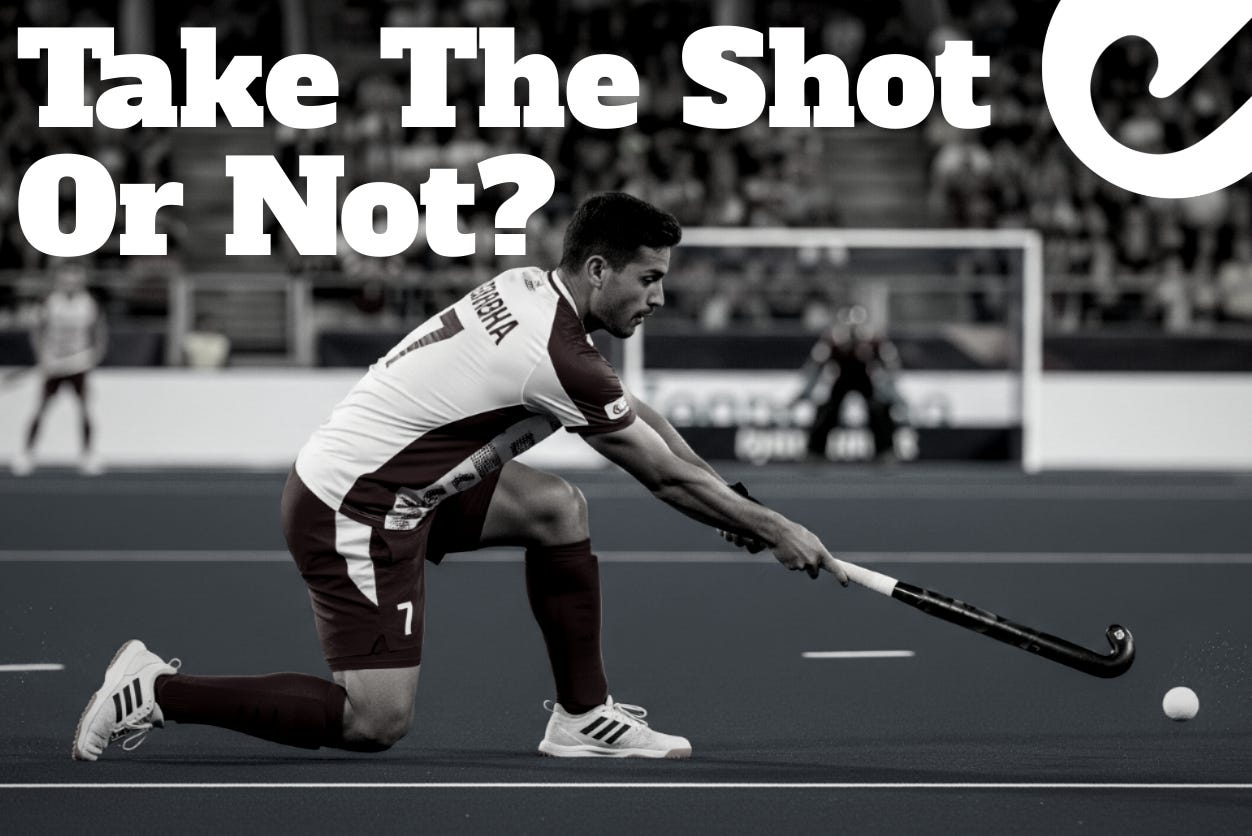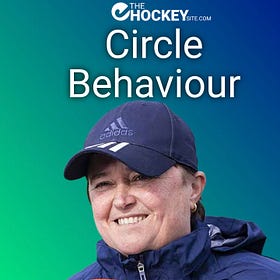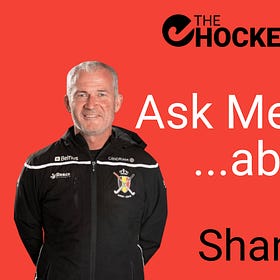Take The Shot Or Not?
When to Choose Penalty Corner or Shot on Goal? Training Decision-Making for Strikers
The moments inside the attacking circle often determine the outcome of a match. Strikers are faced with split-second decisions: should they take a shot on goal or attempt to win a penalty corner? Both options, for obvious reasons, have their merits but the key lies in understanding the context, the probabilities, and the tactical objectives. We’ll explore when to choose each option and how to train your strikers to make these decisions effectively.
Along the way, we’ll draw on insights from some of the best minds in the game:
Some of the sources for what you’ll read below:
Circle behaviour
The topic chosen by Alyson Annan for her masterclass was circle behaviour. No surprise there, since she was a prolific striker herself in her playing days. We recorded it live on December 8 in 2023.
Beyond Shot Count: How Data Analysis Can Change Your Team’s Circle Tactics
Another masterclass is in the books! This time, we were fortunate to have analysis expert Simon Blanford join us again on The Hockey Site to tackle a topic close to all our hearts— scoring! Or to put it another way: are we coaching our players to make the best possible choices when they find themselves in the D?
Ask Me Anything with Shane McLeod
On September 3, 2021 we hosted an AMA with Shane McLeod, the former coach of the Red Lions (Belgium). Our LIVE Ask Me Anything session with him will obviously deal mostly with his preparation for Tokyo and his experiences at this event.
The Case for the Penalty Corner
Penalty corners (PCs) are a cornerstone of modern field hockey. They offer a structured opportunity to score, with conversion rates that often outpace those of open play shots. Simon Blanford, a field hockey coach and expert in statistical analysis, highlighted this in a masterclass I hosted:
“Penalty corners have this nice, consistent tick-over rate of scoring. You’re going to score one in four, one in five if you get a penalty corner, whereas you have to take a number of shots on average to meet that kind of expectation” .
This reliability makes PCs an attractive option, especially in tight games where every goal counts. However, as Blanford also pointed out, the decision to go for a PC isn’t always deliberate: “How often do players actually try to win a corner? If they’re making a decision between shooting or moving the ball or winning a corner, how often are they actually trying to win a corner when they get into the circle?” .
This raises an important question for coaches: are your players equipped to intentionally create PCs when the situation demands it?
The Case for the Shot on Goal
While PCs are reliable, there’s an undeniable thrill, and potential reward, in taking a shot on goal. Field goals are dynamic, unpredictable, and often the result of creative play. Shane McLeod, the coach who led Belgium to Olympic gold, shared his perspective during an AMA session:
“I still enjoy watching field goals more than I do watching penalty corners go in. I like that about our game, that the amount of field goals that are scored” .
The decision to shoot, however, comes with its own set of challenges. Shots in open play often have lower probabilities of success compared to PCs. As Blanford noted:
“The vast majority of shots have very low scoring probabilities. Yes, of course, there are shots that have good scoring probabilities, but they’re relatively rare in comparison” .
This means that strikers need to be highly selective and precise when opting for a shot.
Key Factors in Decision-Making
So, how do strikers decide whether to shoot or aim for a PC? The decision often hinges on several factors:
Position and Angle: Is the striker in a position to take a high-probability shot? If the angle is tight or the goalkeeper is well-positioned, a PC might be the better option.
Support and Movement: Are there teammates in better positions to receive a pass or deflect a shot? Alyson Annan emphasized this during her masterclass on circle behavior: “A pass to someone in the circle who’s in a better position can also be an option. If you’re able to pass to someone else in a better position, that’s efficient—penalty corner, penalty stroke, and a goal” .
Defensive Pressure: Is the striker under heavy pressure from defenders? If so, deliberately playing the ball onto a defender’s foot to win a PC can be a smart move.
Game Context: What’s the scoreline? How much time is left? In a close game, the reliability of a PC might outweigh the risk of a low-probability shot.
Team Strengths: Does your team have a strong drag flicker or a well-rehearsed PC routine? If so, the PC becomes an even more attractive option.
Training Decision-Making
Decision-making in the circle is as much about mindset as it is about technique. Annan put it succinctly:
“Circle behavior for me is a mindset, not just technique” .
To train this mindset, coaches need to create scenarios that replicate the pressures and complexities of match play. Here are some practical training methods:







